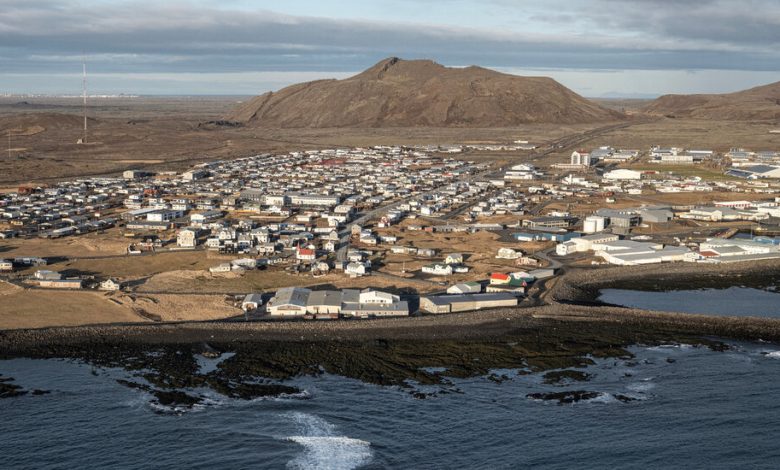Volcano’s Eruption Threat Is Ebbing, but Iceland Continues to Wait

The likelihood that a volcanic eruption will engulf the fishing town of Grindavik, Iceland, is decreasing by the day, officials said on Friday, even as they continued to warn that an eruption could still occur.
Grindavik, with more than 3,000 people, was evacuated this month after it was determined that a nine-mile-long underground river of magma was moving beneath the town to the ocean.
Residents are now allowed to go home during the day to check on their properties and belongings, but until scientists give the all-clear, people cannot permanently return, Jon Thor Viglundsson, a spokesman for Iceland’s Department of Civil Protection and Emergency Management, said.
Seismic activity has caused Grindavik to sink and has damaged the sewage system. As a result, the town cannot access cold water, he said. “Sewage is a problem, and sewage lines are ruptured,” he added.
While damage to individual buildings has been limited, Mr. Viglundsson said, because Grindavik sits on a fault line, “the damage to infrastructure is great and affects most of the town.”
Since late last month, tens of thousands of earthquakes have been reported in the Reykjanes Peninsula in the southwestern part of Iceland, sometimes more than 1,000 in a single 24-hour period. That seismic activity led scientists to conclude that an eruption might be imminent, and for much of the past couple of weeks, officials warned of an eruption “within days,” putting Iceland in a holding pattern. The emergency level has since been lowered.
About 300 earthquakes were detected in the area on Tuesday, followed by about 100 on Wednesday, according to the Icelandic Met Office, the country’s weather service, which it said was “considerably less than in recent days.”
The magnitude of the earthquakes has decreased as well. If that continues, “the likelihood of an imminent volcanic eruption diminishes with time,” according to the weather service. Still, it said, an eruption along the underground magma river remained plausible.
Iceland has also been fortifying a power plant that supplies electricity and hot water to about 30,000 people, work that was expected to take about 30 days to complete. The plant also powers the popular geothermal Blue Lagoon spa, which has closed until at least next Thursdayas a precaution.
Iceland, a country of fewer than 400,000 people and about 130 volcanoes, has a long history of seismic activity. Most of its volcanoes are active. The country straddles two tectonic plates, which are divided by an undersea mountain chain that oozes molten rock, or magma. Earthquakes occur when the magma pushes through the plates.
If an eruption does occur, it is expected to be a localized event that probably would not disrupt flights the way the Eyjafjallajokull volcano did in 2010. Its eruption produced an ash cloud that grounded much of the air travel in Europe.




